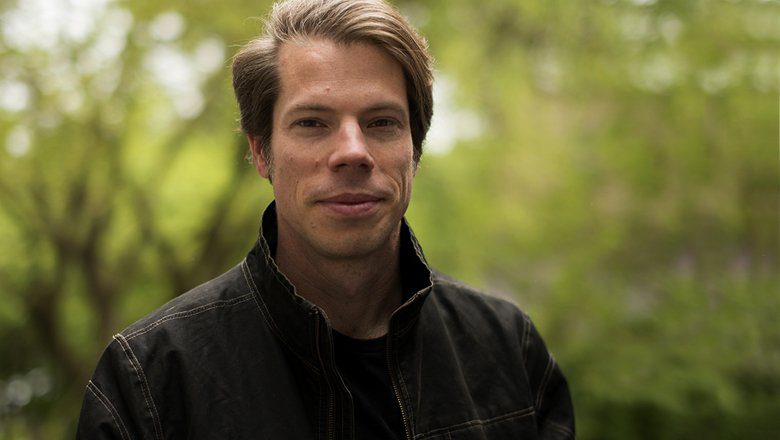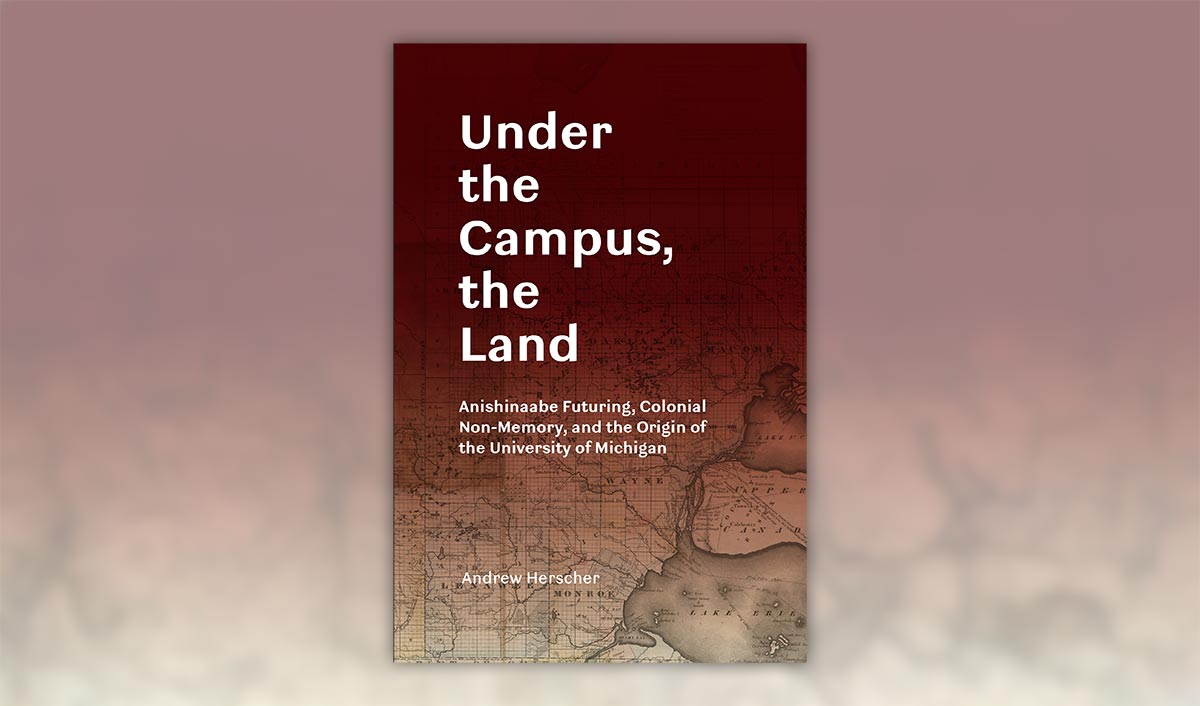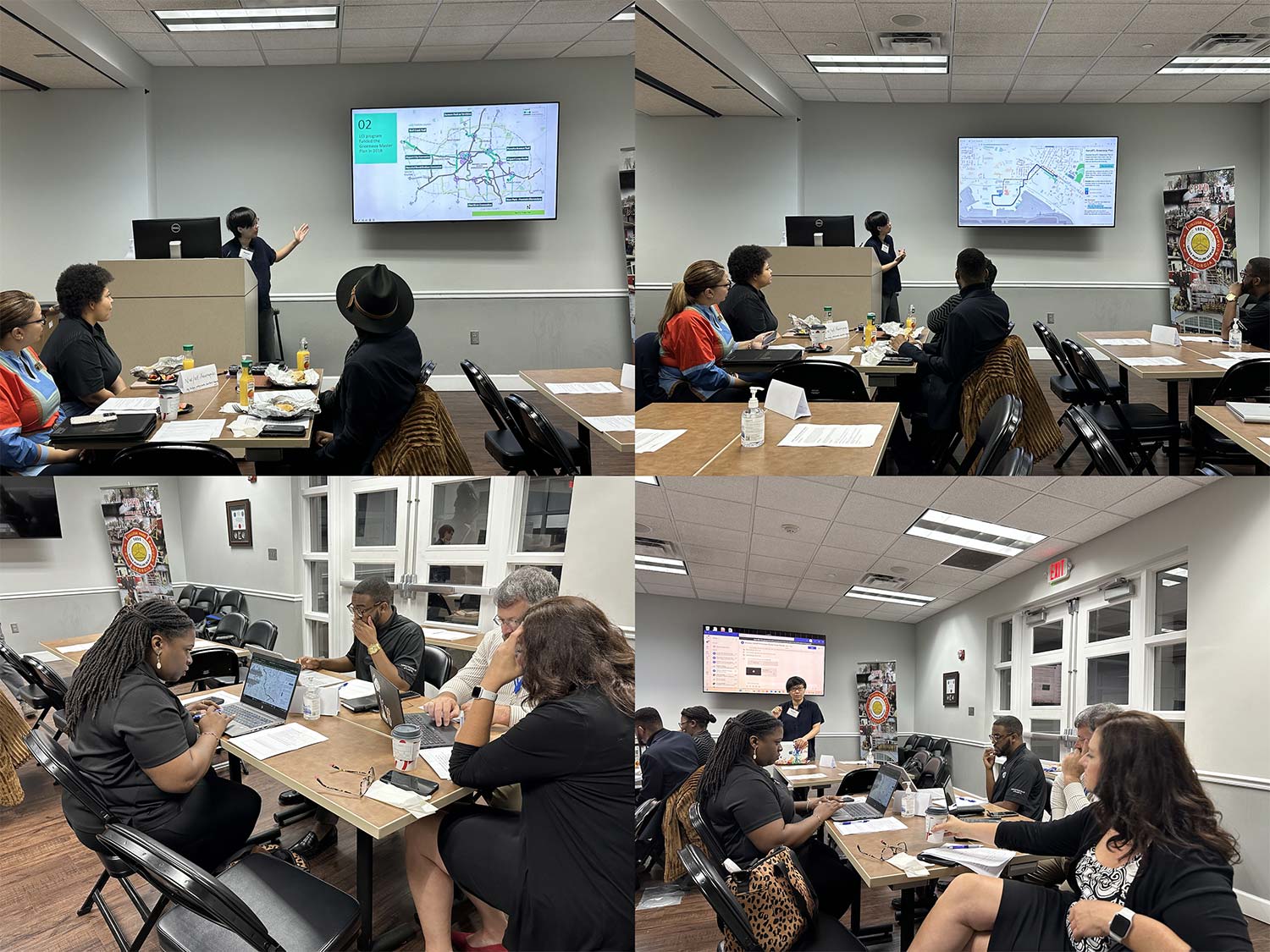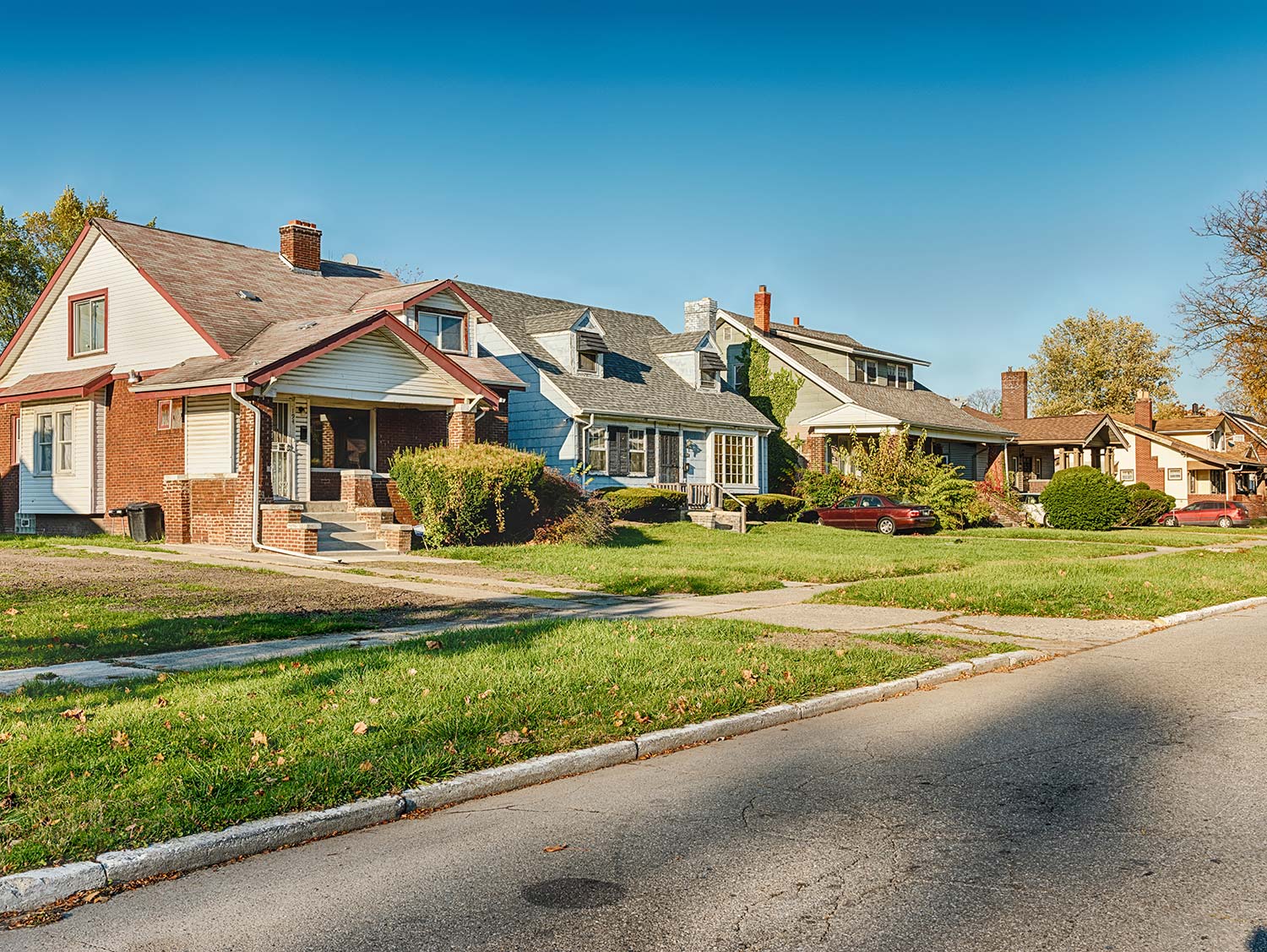
McGee: Bridging Gaps between Architecture, Engineering, and Construction
This story was updated in February 2022
In his research, Wes McGee, associate professor of architecture and director of Taubman College’s Digital Fabrication and Robotics Lab (FABLab), tackles obstacles that have impeded the adoption of high-performance, non-standard building components and materials into the design and construction industries.
He and his collaborators have:
- Developed new design-to-manufacturing workflows to enable architects and designers to interact efficiently with robotic and CNC manufacturing tools.
- Explored the manufacturing of architectural forms which respond to diverse inputs including structural, acoustic, and aesthetic performance.
- Investigated the use of large-scale 3D-printing to fabricate performative concrete composite structures with improved surface finishes.
- Custom-built a parametric glass forming kiln to form doubly curved glazing components that can improve structural and environmental performance.
- Created and implemented algorithms that address challenges hindering the use of robots on construction sites—including the worksites’ rugged, unstructured, and changing environments.
- Developed methods for robotic processes to adapt when an object that it’s programmed to work on isn’t precisely where it’s supposed to be.
“[T]he application of robotic technologies in these disciplines [architecture and design] is consistently growing, led by interdisciplinary teams of designers, engineers, and fabricators around the world,” says the book Robotic Fabrication in Architecture, Art and Design 2014, which McGee edited with Monica Ponce de Leon, former dean of Taubman College and now dean of the Princeton University School of Architecture.
“Innovators in the creative disciplines are no longer limiting themselves to off-the-shelf technologies, but instead have become active participants in the development of novel production methods and design interfaces,” the book continues. “Within this emerging field of creative robotics, a growing number of research institutions and professional practices are leveraging robotic technologies to explore radical new approaches to design and making.”
McGee and Taubman College’s FABLab are at the forefront of this movement to bridge the gaps between architecture, engineering, and the building industry. Since its opening in 2009, the FABLab has been a leader among academic institutions worldwide in the use of cutting-edge industrial technologies. It provides tools and space that enable students to work with a wide variety of building materials on a large scale with extreme precision.
“As a discipline, architects typically aren’t experts in any single material or process,” McGee says. “They have to understand the capabilities and nuances of the full range of construction processes and building materials.”
In the FABLab, students and faculty use six-axis industrial robots to perform processes such as sensor-guided welding and automated bending, timber assembly, and large-scale 3d printing. “Robots are inherently flexible tools, as they can be equipped to perform a wide range of fabrication processes,” McGee says. The lab also houses a wide array of CNC manufacturing tools, enabling student and faculty to digitally process materials at full-scale, as well as 3d printers and a full wood and metal shop.
“I think having access to the fabrication resources is definitely a big draw for prospective students, but what is even more important is the chance to study and work with a diverse group of faculty exploring the full breadth of the discipline” McGee adds.
McGee’s own academic and research interests meet at the juncture of design and engineering, with an eye toward potential commercial applications. “What does it take to get this technology out of the lab and into the construction industry?” he asks. “That’s where we want to be leaders. That’s where I want to work.”
In January 2022, McGee and a team that includes Taubman College Assistant Professor Arash Adel and colleagues from U-M’s College of Engineering began work on a $2 million grant from the National Science Foundation. The project, “Collaborative Research: Partnering Workers with Interactive Robot Assistants to Usher Transformation in Future Construction Work,” envisions that intelligent human-robot teams have the potential to increase productivity and streamline processes, thereby transforming the profile of future construction workers and resulting in new career opportunities and significant benefits to the industry.
“This research builds on several years of collaborations between the Taubman College Robotics Lab and the Department of Civil and Environmental Engineering,” says McGee, a co-principal investigator on the project. “We have spent over a decade developing a digital twin environment to allow designers to interface seamlessly with digital fabrication and automation tools, and the next stage of this work will explore collaborative models of fabrication and assembly.”
Students at Taubman College benefit from these multidisciplinary collaborations, too, McGee notes. He wants students to leverage advanced hardware and software to explore the potential for automation to inform and advance design processes; develop a deep understanding and vocabulary of fabrication; and tackle real-world challenges related to efficiency, performance, and sustainability.
He cites an alliance between Taubman College and Guardian Industries — which funds faculty projects that explore, inform, craft, and advance a long-term strategic vision — as a model for academic-industrial research initiatives.
“In a lot of ways, our efforts at Taubman have been successful,” McGee says. “Many more schools are following this approach [investing in fabrication technologies] and there’s been a shift in the industry. We are seeing more and more grads find employment based on their unique experiences with cutting edge technology.”
In 2008, McGee co-founded Matter Design, a research lab dedicated to redefining and expanding the role of designers in the digital era. “Our work spans a range of scales, from products to furniture to experimental pavilions,” he says. “We develop new computational design approaches, and often combine these with new — or forgotten — methods of production.”
“These methods of production are often developed and prototyped in the fabrication lab, as part of funded research projects but also through courses and workshops with students,” he explains. “My own research has always been directly connected to the work of Matter Design as an iterative process of developing new techniques within the lab context and exploring how they can expand beyond that through continuous collaboration.”
—David Wilkins









